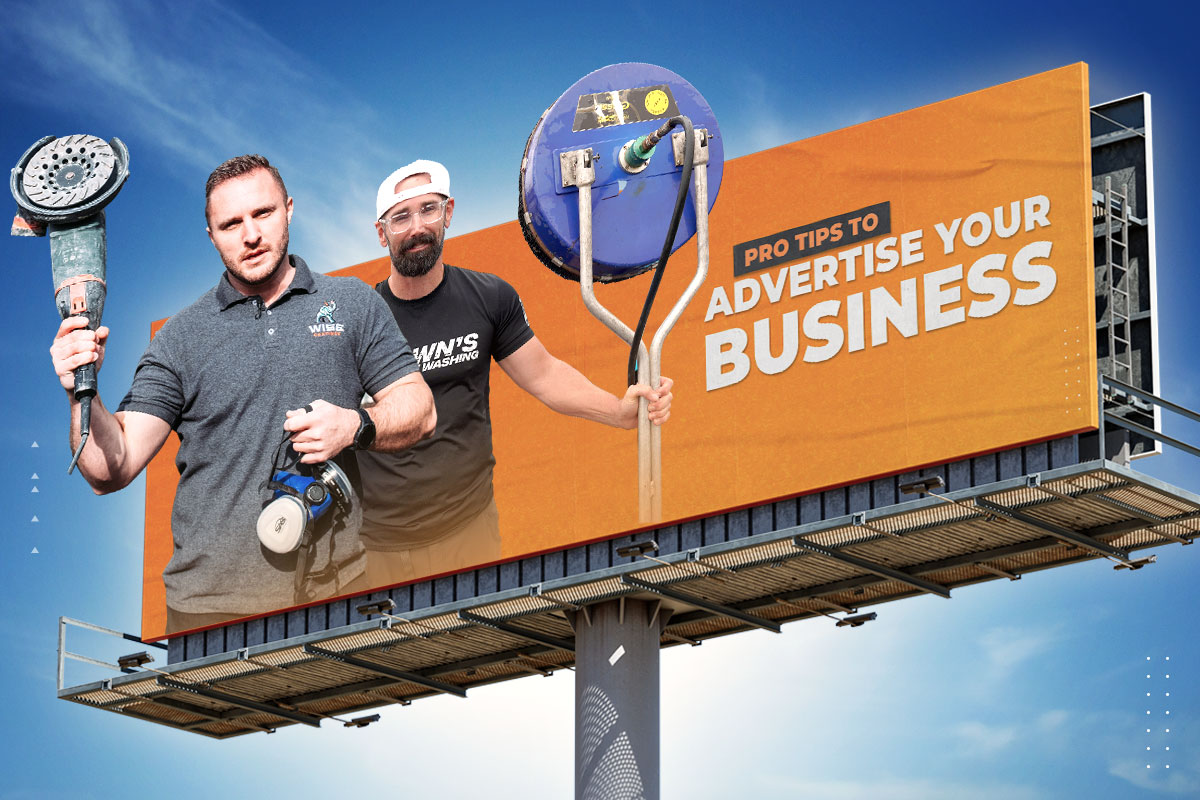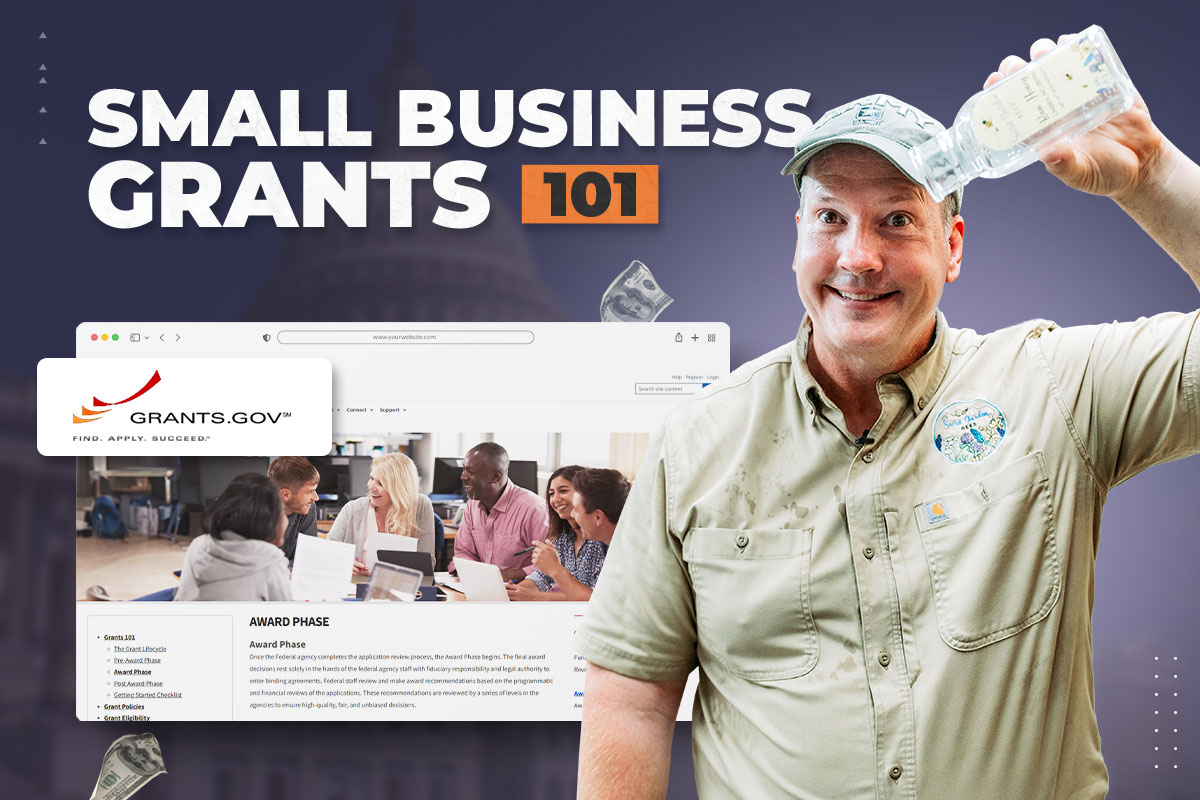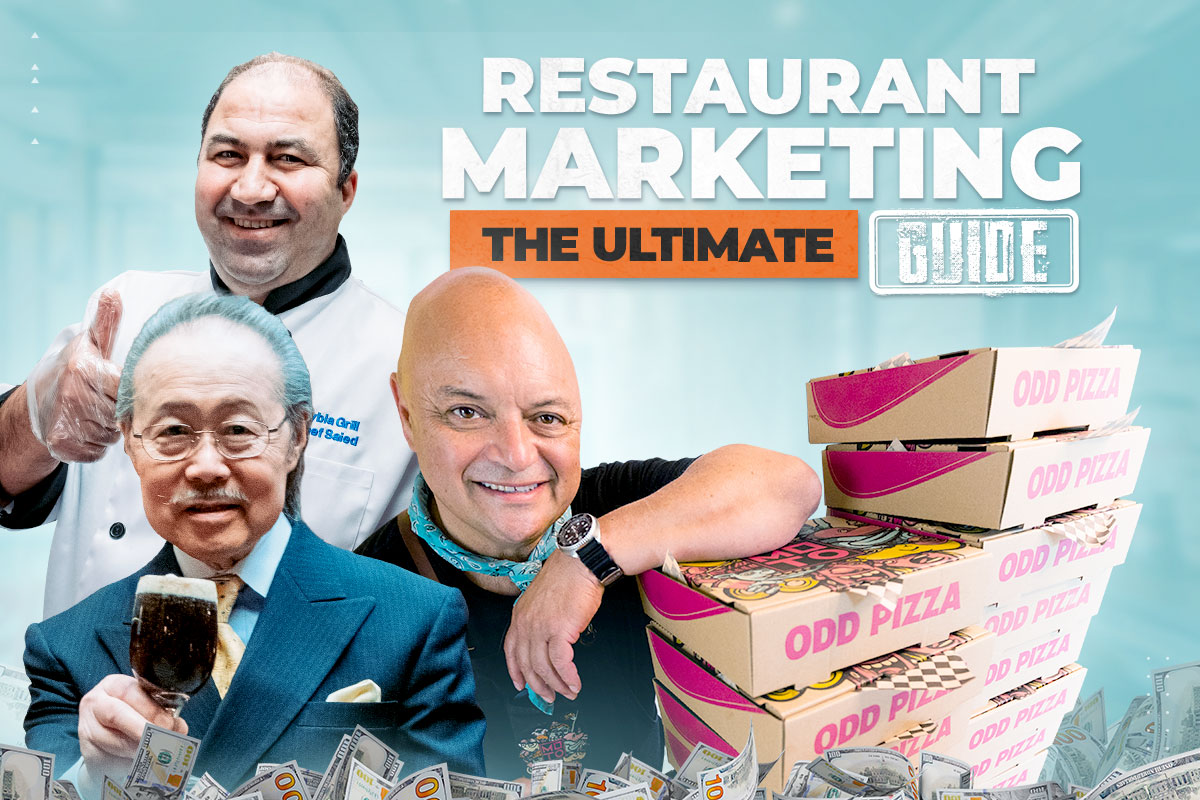Many small businesses struggle to get enough clients. That’s no surprise since there are many different types of advertising. Within each category, you’ll find multiple options of ad networks to work with and styles of ads to choose.
We’ll define advertising, discuss the types of advertising, and talk about the major differences between digital advertising and traditional advertising. Then we’ll provide you with some advertising tips and answer the most commonly asked questions about advertising.
You can either keep reading or click on any of the links below to jump to the section that interests you:
Keep reading to understand the definition and purpose of advertising.
Learn About Advertising
What is advertising?

Advertising is the process of creating demand for products and services. Although the same term is often used to describe the larger industry, this blog is meant to help you succeed while advertising your small business ventures. If you’re more interested in advertising as a profession, check out our blog about how to start an advertising agency.
Get ready to learn about the different types of advertising.
Types of Advertising
You can choose to use any combination of these thirteen different types of advertising for your small business:
- Social media advertising
- Pay-per-click advertising (PPC)
- Mobile advertising
- Print advertising
- Broadcast advertising
- Out-of-home advertising
- Direct mail advertising
- Print advertising
- Podcast advertising
- Native advertising
- Guerrilla advertising
- Product placement advertising
- Public service advertising
Digital Advertising vs. Online Advertising

The terms digital advertising and online advertising are commonly used interchangeably, but there are some differences. Digital marketing includes anything that isn’t on print or radio, while online advertising includes any ad that people can interact with to get more information.
For instance, a digital billboard could be considered a form of digital marketing, but it’s not online where people can interact with it. You can’t really track the results either.
Let’s take a closer look at all the small business advertising options available today.
Digital Advertising
Social Media Advertising
Social media advertising is the most popular form of advertising for small business operations. This involves creating images, videos, posts and offers for social media platforms. The end goal is to increase awareness or get people to complete a specific action.
Social media platforms include Meta (Instagram and Facebook advertising), LinkedIn advertising, TikTok, and X. They provide business ad platforms that allow you to target people based on specific demographics in a cost-effective way. They also offer analytics to measure the results of your advertising campaign.
For business ads to be most effective, you’ll need to research your target audience to a small portion of the population. You might also hire influencers to assist with social media advertising. Keep reading to learn about other types of advertising.
Pay-Per-Click Advertising

Both social media ads and search engine marketing (SEM) are types of digital advertising that charge based on the number of clicks your ad receives. PPC advertising focuses on helping people go to the page you want them to see.
This ad spend doesn’t guarantee a lead or customer. Digital ad platforms also allow other ad campaigns like cost per action or cost per 1,000 impressions.
The cost per 1,000 impressions will be the least expensive advertising strategy for building brand awareness. Meanwhile, cost per action is the best option if you only want to pay when someone completes an action like requesting a quote or buying a product.
Want to learn more about paid search advertising? Check out our Google Ads for Beginners course in the UpFlip Academy.
Mobile Advertising
Mobile advertising limits your advertising to phones and tablets. This type of advertising includes:
- Display ads: These banner ads feature a picture and link that are hosted on websites by Google Ads.
- Search ads: These are text-only digital ads that are used in Bing and Google advertisements.
- Video ads: Videos ads often appear on YouTube, TikTok, Meta, and other social media sites. They can be either landscape videos or Reel-style videos. These allow the most storytelling of any digital and social advertising.
- App ads: If you’re a company with lots of customers and a loyalty program, you’ll want to use digital advertising that helps people find your app in the app store.
- Mobile ads on social media: Social media platforms allow you to target your ads to only mobile advertising.
Overall, mobile advertising is beneficial to small businesses because more than half of all purchases are made on mobile devices.
Podcast Advertising

Advertising on podcasts combines the benefits of digital advertising with the audible nature of broadcasting ads. You can include pop-up ads, banner ads, surveys and more. Meanwhile, you can’t collect that kind of data with radio ads.
Keep reading to learn about other types of advertising.
Native Advertising
Native ads are most common on digital marketing platforms. Native advertising will always look very similar to the site’s non-advertising elements.
Native ads are meant to feel unintrusive but may be difficult to identify. These ads may also be called:
- Sponsored content
- Boosted posts
- In-app video
- In-feed units
- Promoted content and listings
- Recommendation widgets
- Sponsored outstream video
Google differentiates between native ads and organic search results by including the word sponsored directly above native advertising placements.
Video Advertising

Video ads are a popular form of marketing. Video advertisements can be used with most social media platforms, mobile apps, and TV. They also work well in movie theaters and as digital billboard ads.
You can use video ads to tell a story, entertain, or describe your product’s features. Video advertisements help people remember things better because customers spend more time watching video ads than they do looking at most print advertising.
Paid Search Advertising
Businesses use multiple forms of paid search advertising to get their products, services, and web assets in front of potential customers. Some common search advertising includes:
- Google search ads: These are the primary search ads that are at the beginning of the search results.
- Local search ads: These ads focus on searches for service businesses. They’re triggered by searches that include zip codes, city names, or terms like near me. You pay for them each time a person contacts you for a service.
- Product search ads: When you search for a product name or category, the searches will display pictures of products with the price and where to buy them.
Remarketing Strategies
Remarketing is a type of online advertising where you target people who have already interacted with your business. Both social media and paid search advertising allow this strategy as long as you have their analytics coding on your website.
Remarketing is more effective because the person is already familiar with your business. Business owners find it to be more cost effective than standard ads, and it helps improve conversion rates.
Traditional Advertising

Print Advertising
Compared to digital advertising, print advertising may not have great results. Depending on your campaign and the newspaper or magazine, you may be able to use QR codes to give you the same tracking that’s available with digital advertising.
Brandon Vaughn, the owner of Wise Coatings, explained:
Brandon also teaches the Business Startup & Growth Blueprint in the UpFlip Academy. Sign up for a free trial to learn more about his proven advertising strategies.
Broadcast Advertising
Broadcast ads that run on tv, radio, and streaming services can be great for raising awareness about your business. TVs and streaming services can also be used to link to your website.
Radio is the most difficult broadcast advertising to track results. You’ll have to ask where customers heard about your business to be able to attribute the lead to the right marketing channel.
Broadcast advertising is also more expensive than other forms of advertising. Part of the reason for the expense is that a TV commercial can get up to 18 million viewers at once. When you assume a cost of $8.60 per 1,000 impressions (similar to FB ads), that means 18 million viewers would cost $154,800.
In his pressure washing course, Joshua Brown explains the benefits of his relationship with media stations:
Keep reading to learn about other types of advertising.
Out-of-Home Advertising

Out-of-home advertising includes analog and digital billboards, grocery carts, bus stops, and vehicle toppers. In other words, it covers advertising strategies that customers see while moving around town.
Out-of-home advertising may involve digital or print advertising. They’re good for expanding awareness in your location, but you’ll need a QR code to track your success.
Direct Mail Advertising
Almost every local service business we talk to mentions either direct mail, door hangers, or both types of print ads. Meanwhile, this form of advertising doesn’t seem to have as much success with other types of companies.
Sending direct mail advertising can be highly successful for local service businesses. If someone is already an ideal customer, then their neighbors are likely to be as well.
Direct mail advertising is one of the most affordable types of advertising. The direct mail strategy where you send a postcard to each of a customer’s five closest neighbors can be done at fairly low cost. It’s usually under $5 for materials and shipping, plus the one-time cost of direct mail design.
Keep reading to learn about other types of advertising.
Print Advertising

While we’ve already discussed several types of print ads, keep in mind that print advertising campaigns can utilize marketing automation to perform tasks like direct mailing. You can also use automation with seasonal print media ads to get mailers sent out before your busy season each year.
Guerrilla Advertising
Of all the types of advertising, guerilla advertising can be the most exciting. It’s often cost effective as both a form of digital advertising and traditional marketing.
Ultimately, you’re using the element of surprise as an advertising strategy. For instance, both the giant popsicle and the Deadpool dating profile are great examples of guerilla advertising.
Product Placement Advertising
Product placement, or embedded marketing, is a marketing technique where a product or service is featured in movies, music videos, social media posts, or television shows.
When you run an advertising campaign using paid product placement, consider whether the target audience for that media is closely related to the product you’re offering. The goal is to tie your brand image to another positive association in potential customers’ minds.
If you choose product placement advertising, try to have fun with it. I personally think that Mike Myers movies have some of the best examples of product placement.
Public Service Advertising
These advertising examples are more commonly referred to as public service announcements. Examples of public service advertising include AMBER alerts, natural disaster warnings, and safety messages that media companies spread for free.
The Marked Safe feature on Facebook is also a good example.
7 Advertising Tips for Small Businesses
Tip #1. Target the Right Audience
Different customers will respond to different marketing strategies as you try to get them to interact with your brand. Brandon explained that there are three main customer groups you need to track:
- New customers: These are first-time customers. You’ll want to educate them on your product because they’re unlikely to be familiar with specifics.
- Repeat customers: Marketing to these customers might consist of an email or text reminder that they’re due for routine maintenance.
- Referrers: You’ll want to identify who sends leads and offer them special deals that encourage them to continue.
Tip #2. Advertise Where Your Audience Is

Marketing isn’t just about advertising where you’re most comfortable. It’s also about meeting your target market where they are.
At first, you might want to take a broad approach to see whether online advertising or print ads work best. As time goes on, you’ll want to narrow your focus until you’ve brought your marketing down to a few channels.
Alternatively, you can choose the channel you’re most familiar with and focus on that. Focus on optimizing your online campaigns for one channel, then move to another one. This strategy works well with lower budgets.
Tip #3. Track and Measure Success
Make sure you have a way of knowing which types of ads are providing you a return on your investment. All advertisements need a way to track success.
Examples include having tracking cookies on your website or placing dynamic QR codes in print advertisements. For traditional marketing channels like TV and radio, you could even create a special landing page.
Tip #4. Get the Timing Right

Don’t waste marketing money during slow seasons. Joshua Brown recommends:
He went on to explain that you need to use a three-step process called ACE to properly advertise:
- Anticipate: Know when the season starts to pick up and slow down. Either use past revenue data or ask other businesses in your industry.
- Capitalize: Spend the majority of your marketing budget one to three weeks before when you expect to need it.
- Extend: When you start having excess capacity, contact people or businesses that you weren’t able to help during peak times and offer them discounts. You might also use booking service agreements or offering ancillary services. For instance, Brown’s Pressure Washing hangs Christmas lights during the winter.
Tip #5. Prioritize Customers by Acquisition Cost
Marketing automation is a major part of managing all the different advertising platforms. You’ll want to classify all customers into a minimum of three categories based on your relationships.
When a potential customer books a job or buys something from your business, you’ll want to classify them as a new customer. Of the three types of customers, these are the most expensive for your business.
Meanwhile, it costs around 1% of revenue to market to repeat customers and keep them happy. Reach out by email, text, and mailers at the start of the season to give them the best offers and first pick of dates.
Referrals fall somewhere in the middle. A referral is going to be more expensive than working with repeat customers but less expensive than finding new customers through other means.
You’ll also want to identify some other segments of your target audience, including:
- Potential customers (leads): Classify every person who contacts you as a lead. You’ll normally acquire leads from the previously mentioned types of advertising. As you go through the process, you may want to divide leads by their source.
- Returning customers: This category includes people who have used your business before but have since fallen off the radar. These potential customers might have lost your phone number or email, but they could also be unhappy customers.
- High-maintenance customers: Some target customers appear to meet your ideal customer profile but deserve an extra markup because you don’t really want to deal with them.
- “Fired” clients: This category is for the customers you don’t want to work with again.
Next, we’ll discuss advertising methods to remarket your business.
Tip #6. Put More Money Into What Works

When something works, keep pushing it to the point where you get diminishing returns. As long as the marketing is paying for itself, keep throwing more money into it.
Tip #7. Stop Spending Money on Underperforming Assets
Whether you’re using more traditional advertising mediums or digital advertising, you need to pay attention to what’s performing well. If video advertising is working for you, then keep doing it.
Likewise, if you’re using search engine advertising and a specific keyword isn’t yielding results, disable it. There’s no point in spending your money on an ad campaign that isn’t generating results if you have a marketing strategy that is.
Small business owners warn that many types of ads take about three months to start generating real results. Try to be patient.
Advertising FAQ
What advertising is most affordable?
Word-of-mouth advertising is the most affordable advertising. Other cost-effective methods of advertising include online advertising, social media, and direct mail.
- Online advertising: Bing ads are more affordable than Google Ads, but they also have less than 10% of the reach that Google does.
- Social media: You can market on social media without using ad space. In fact, some people discover that their personal accounts have better organic reach than their business accounts.
- Direct mail: Direct mail can be an extraordinarily low-cost form of marketing for local businesses. There are ways of advertising with direct mailers for only $0.05 to $0.10 per address, which makes it one of the most budget-friendly forms of advertising.
What advertising is designed to bring back former customers?

Remarketing focuses on getting former customers to resume purchasing from your business. Remarketing can be done through email, text messaging, social media, search engines, or even phone calls.
What type of marketing is the most difficult for consumers to ignore?
Product placement is the most difficult type of commercial to ignore because they’re placed in entertainment in a way that people can’t change the channel or fast forward.
This type of advertising is usually in the form of a video ad in movies or TV shows. Product placement may be as subtle as carrying a branded coffee cup or as obvious as a full video ad.
What type of advertising is used when introducing a new product?
Pioneer advertising is normally used when a company or product is new. It helps you develop awareness and create initial demand. You’ll normally focus on informing people about the new features or services you’ll be offering.
Start Advertising
At this point, you should understand the different types of advertisements and best practices for choosing your primary advertising method.
We’ve provided you with advice from successful business owners and highlighted examples of different types of commercials. We also discussed some of the best advertising options for small business owners based on your goals and business model.
What types of advertising do you use? Let us know in the comments below.





